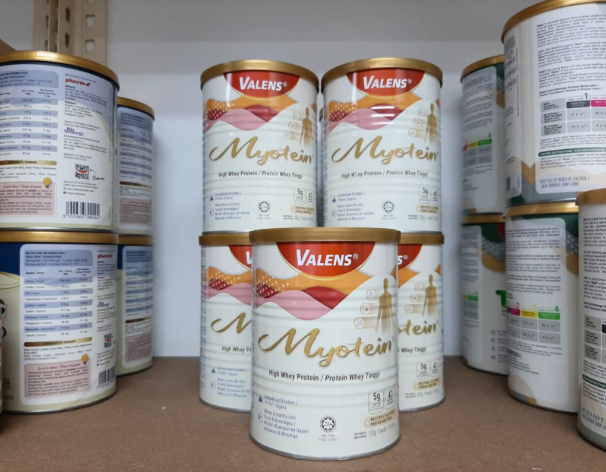Back pain is a common problem among older adults, and it often affects their daily activities and quality of life. LBP (Low Back Pain) is also associated as one of the leading causes of disability and diseases¹ globally.
While there are several ways to relieve back pain, getting sufficient dietary protein intake and regular exercises are among ways proven to improve back pain².
Protein is an essential nutrient that is necessary for the maintenance and repair of muscle tissue. As we age, we experience muscle loss (age-induced sarcopenia) as our muscle mass naturally declines, which can lead to overall weakness and increased risk of fall and injury³. However, consuming sufficient dietary protein can help to promote muscle strength and function, which can reduce musculoskeletal problems including back pain⁴.
There is some evidence to suggest that adequate protein intake may help to reduce chronic inflammation⁵ in the body for the aging population. Proteins are essential for the growth and repair of tissues, and they also play a key role in the immune system⁶, so it is important to ensure we consume adequate protein in our everyday diet. This is because proteins contain amino acids that are essential for the production of anti-inflammatory molecules such as cytokines and antibodies. Additionally, some studies have suggested that protein may help to reduce oxidative stress⁷, which is a common cause of inflammation in the body.

According to MRNI (Recommended Nutrient Intake of Malaysia), a healthy adult should ideally get 1 gram of protein for every kilogram of his or her body weight, each day. This means if you weigh 55 kg, you should be getting around 55 grams of protein every day. Older or senior adults may also need a higher protein intake to fight against chronic illness and muscle loss.
Regular exercise is also critical for maintaining back health. Moderate exercise helps to improve muscle strength and flexibility, which can reduce the risk of back injuries and improve overall spinal health. Exercise also helps to promote good posture, which can reduce the strain on the back muscles and spine.
To maximize the benefits of protein intake and exercise for back pain relief, older adults should aim to consume a balanced diet that includes high-quality sources of protein such as lean meats, fish, eggs, and beans. They are encouraged to accumulate at least 30 - 60 minutes of moderate intensity aerobic physical activity like brisk walking, cycling, aerobic exercise for 5-7 days a week⁸.
However, as we age, some older adults may face difficulty in getting enough protein through a variety of food due to certain conditions such as swallowing issues and shrinking appetites. Some might also suffer from chronic inflammation and stress due to certain illnesses and treatments such as surgeries, dialysis and so on. In this case, dietary protein supplements can be used to complement their current diets after consulting with a healthcare provider.

In conclusion, sufficient dietary protein intake and regular exercise can play a vital role in helping older adults to relieve back pain. These strategies can help to promote muscle strength, flexibility, and good posture, reduce inflammation, and increase the release of natural painkillers, leading to improved spinal health and a higher quality of life.
This article is written by Ms Melissa Lee EY, a practising dietitian of Malaysian Dietitian Association (MDA) for Valens Nutrition, a medical nutrition brand widely used by healthcare professionals.
References:
1. Tamrakar M, Kharel P, Traeger A, Maher C, O'Keeffe M, Ferreira G. Completeness and quality of low back pain prevalence data in the Global Burden of Disease Study 2017. BMJ Glob Health. 2021 May;6(5):e005847. doi: 10.1136/bmjgh-2021-005847. PMID: 34001521; PMCID: PMC8130740.
2. Noh HM, Choi YH, Lee SK, Song HJ, Park YS, Kim N, Cho J. Association between Dietary Protein Intake, Regular Exercise, and Low Back Pain among Middle-Aged and Older Korean Adults without Osteoarthritis of the Lumbar Spine. J Clin Med. 2022 Feb 24;11(5):1220. doi: 10.3390/jcm11051220. PMID: 35268311; PMCID: PMC8911099.
3. University of Southampton. "Muscle loss linked to falls, fractures in elderly." ScienceDaily. ScienceDaily, 3 November 2015. <www.sciencedaily.com/releases/2015/11/151103064734.htm>
4. Pasdar, Y., Hamzeh, B., Karimi, S. et al. Major dietary patterns in relation to chronic low back pain; a cross-sectional study from RaNCD cohort. Nutr J 21, 28 (2022). https://doi.org/10.1186/s12937-022-00780-2
5. Noer, Etika & Dewi, Luthfia & Indraswari, Darmawati & Suroto, & Ardiaria, Martha. (2020). High-protein Diet and Exercise Improve Inflammatory Marker and Oxidative Stress After Weight Loss Program in Adolescents Obesity: A Randomized Control Trial. Malaysian Journal of Medicine and Health Sciences. 16. 1-5.
6. Krissansen GW. Emerging health properties of whey proteins and their clinical implications. J Am Coll Nutr. 2007 Dec;26(6):713S-23S. doi: 10.1080/07315724.2007.10719652. PMID: 18187438.
7. Hruby A, Jacques PF. Dietary Protein and Changes in Biomarkers of Inflammation and Oxidative Stress in the Framingham Heart Study Offspring Cohort. Curr Dev Nutr. 2019 Mar 28;3(5):nzz019. doi: 10.1093/cdn/nzz019. PMID: 31037277; PMCID: PMC6483052.
8. Malaysian Dietary Guidelines 2020.

